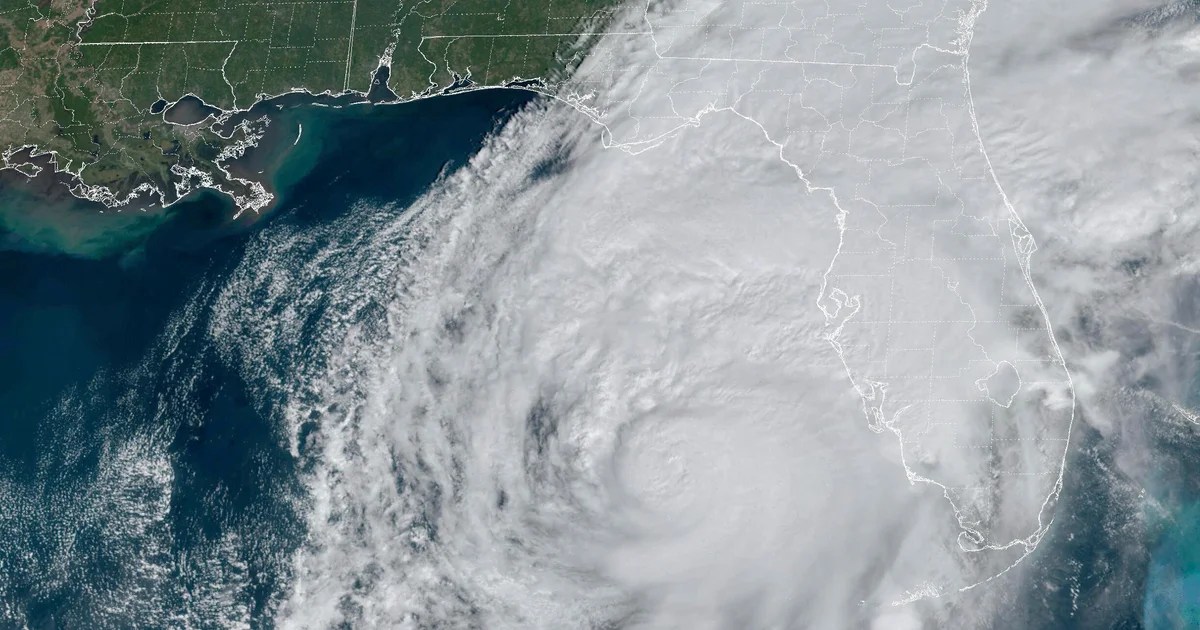
On the cusp of the Atlantic hurricane season, which runs annually from June 1 to November 30, the National Weather Service (NWS) is grappling with significant staffing challenges. As forecasters anticipate an active hurricane season, concerns about the agency’s ability to provide timely and accurate forecasts are growing louder. With the NWS having lost about 10% of its workforce recently, meteorologists are voicing alarms about the potentially dire consequences for communities that rely on these life-saving forecasts.
The staffing shortages at the NWS stem from budget cuts initiated during the Trump administration, aimed at reducing federal spending. According to sources, around 1,000 employees exited the National Oceanic and Atmospheric Administration (NOAA)—the parent agency of the NWS—due to a combination of firings and buyouts. This includes approximately 550 positions that were lost specifically from the Weather Service and its National Hurricane Center, which plays a crucial role in monitoring tropical storms and hurricanes.
As the NWS prepares for what NOAA forecasters predict could be an “above-normal” year—forecasting 13 to 19 named storms, with 3 to 5 reaching Category 3 or higher—experts are stressing the importance of having adequate staffing. Groups of lawmakers, former directors, and meteorologists have expressed their fears regarding the “uncharted territory” in which the NWS finds itself this season.
Bill Read, a former director of the National Hurricane Center, noted that current employees are committed to their essential mission of safeguarding life and property. However, he emphasized that the level of strain they are about to experience is unprecedented. Read remarked, “It’s uncharted territory…the public has gotten used to a certain level of service that may not be met this year.”
In light of these staffing challenges, the NWS has made adjustments to its service level standards to cope with the current circumstances. A spokesperson from the Weather Service assured that they continue to prioritize critical functions and are committed to providing life-saving forecasts and warnings.
Meteorologist Tom Fahy has pointed out that various regional offices are facing critical staffing issues. Forecast offices in areas like Jackson, Kentucky, which recently experienced devastating tornadoes, are particularly vulnerable. The emphasis on relocating staff from more robust offices to critically understaffed ones means that the system as a whole is under immense pressure.
The scheduling of operational meteorologists is vital, especially during ongoing weather emergencies like hurricanes. On average, proper staffing for a forecast office would involve around 12 to 15 operational meteorologists to cover various shifts. However, in many locations, this number has plummeted, raising questions about the ability to issue timely warnings.
One concerning consequence of reduced staffing is that forecast offices may have to limit their operating hours. This could critically hinder the flow of information during emergencies, especially if a storm develops unexpectedly. An anonymous NWS meteorologist pointed out the potential dangers: “How in the world will we know who to talk to when these offices are closed in the middle of the night?”
In addition to staffing vacancies, the NWS is also facing challenges in data collection. Due to staffing cuts, the agency announced the suspension of weather balloon launches at several forecast offices. These balloons are essential for gathering real-time atmospheric data, which informs storm predictions and local forecasts, particularly during evolving weather emergencies.
The potential future of NOAA’s funding looks bleak, with a White House budget proposal for 2026 suggesting a reduction of about $1.5 billion and targeting crucial climate research and observation programming. Critics argue that cutting funds in these areas compromises the efficacy of storm forecasting and public safety.
Compounding the issue is the ongoing federal hiring freeze, which limits the NWS’s ability to recruit new staff. Internal job postings indicate the agency is trying to find immediate reassignments for operational roles at understaffed locations, but this temporary measure is unlikely to address the root problem effectively.
Alan Sealls, who has a long history in broadcast meteorology, remains cautiously optimistic but acknowledges that employees are likely to face burnout under the current conditions. “When you have cuts and layoffs, it means everyone who’s left is working harder with fewer resources,” he stated. “If we have a season where it’s nonstop storm activity, everybody’s going to be stretched to the limit.”
House Democrats have called upon the White House to lift the hiring freeze, asserting that the responsibilities of the NWS are vital to public safety. Yet, they report a lack of substantive responses to their requests for action.
The challenges facing the National Weather Service this hurricane season highlight the intersection of policy, funding, and public safety. As communities prepare for the upcoming threat of storms, the agency’s ability to fulfill its mission will be tested like never before. With meteorologists committed to safeguarding lives and property, the hope remains that the NWS will secure the necessary support to continue delivering timely and accurate forecasts during a critical time.
As we anticipate the upcoming hurricane season, the call for adequate staffing and resources at the National Weather Service is more urgent than ever. It serves as a reminder that the ability to forecast and prepare for natural disasters is not just a matter of operational efficiency but also one of saving lives. Every storm season underscores the importance of having a robust, well-staffed meteorological workforce and a commitment to public safety. As we navigate this uncharted territory together, the safety and preparedness of communities depend on a responsive and effective Weather Service.
Source link









